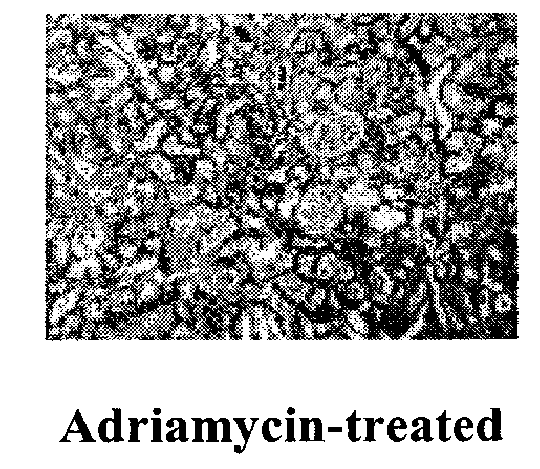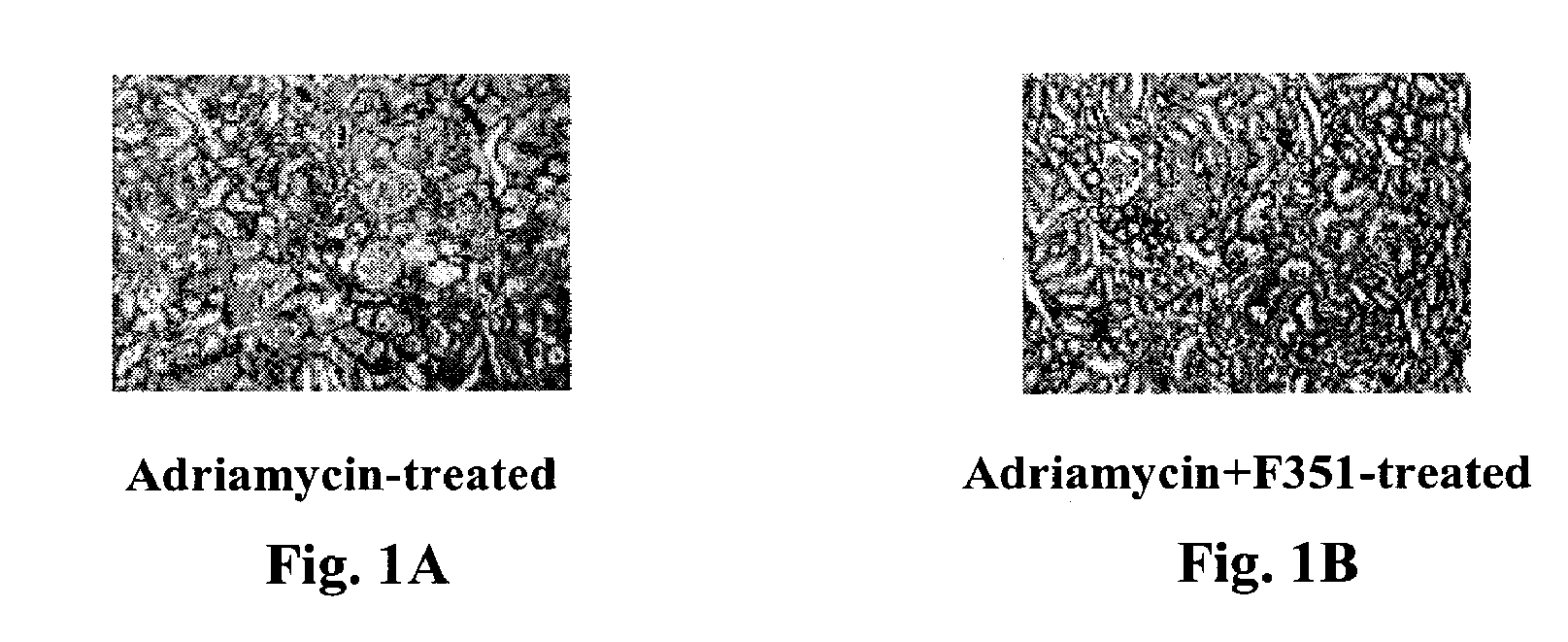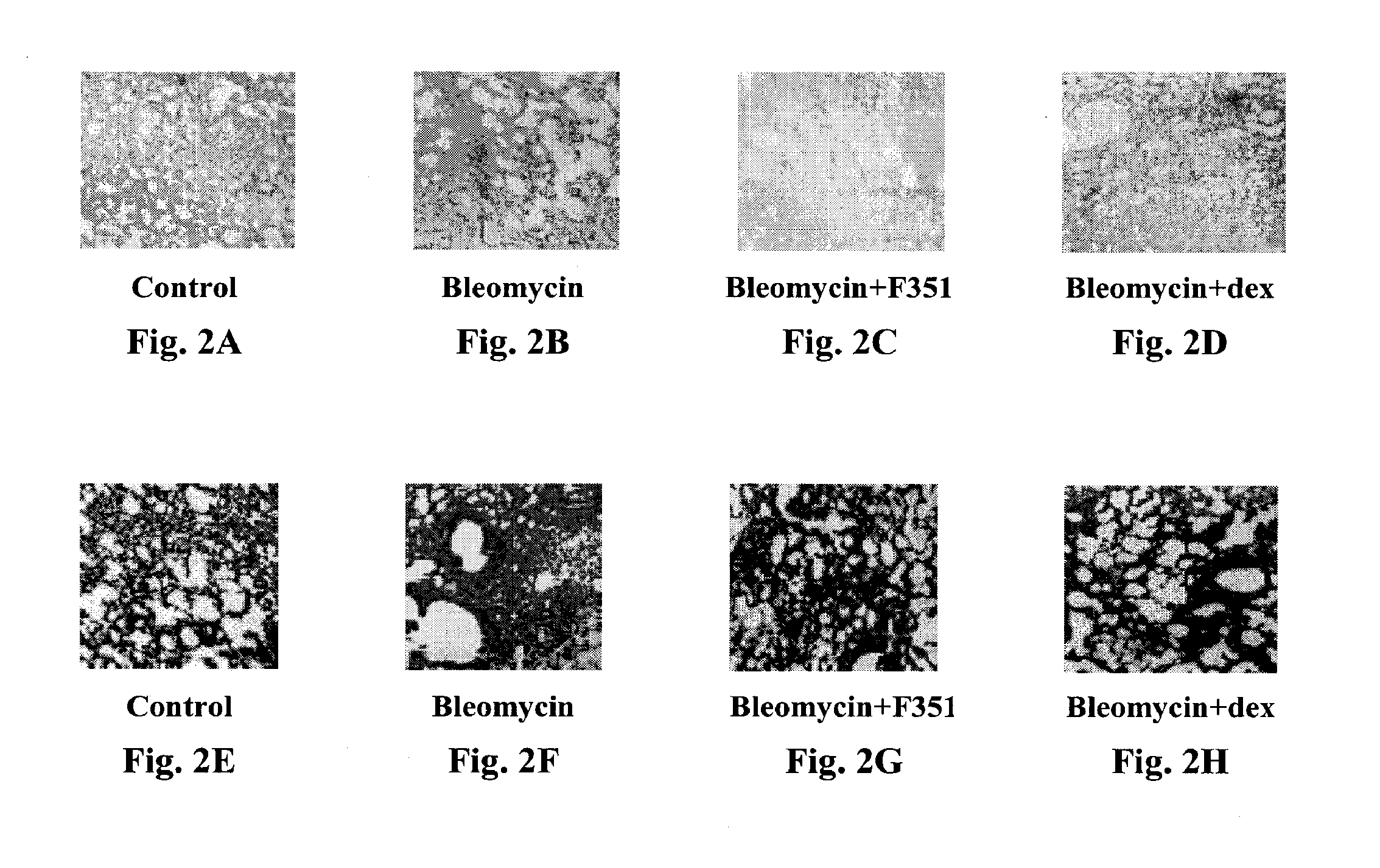Use of pyridone derivatives in the prevention or treatment of tissue or organ toxicity induced by cytotoxic agents and radiation
a technology of pyridone and derivatives, applied in the field of pharmaceuticals, can solve the problems of cytotoxic agents, toxic side effects, and damage to important tissues and/or organs, and achieve the effect of preventing, treating or reducing damage to tissues or organs
- Summary
- Abstract
- Description
- Claims
- Application Information
AI Technical Summary
Benefits of technology
Problems solved by technology
Method used
Image
Examples
example 1
I. The Effects of Pirfenidone On Radiation-Induced Lung Injuries
[0082](a) Irradiation Method
[0083]Irradiation source: Varian 600C linear accelerator, 6 MV X ray
[0084]Irradiation method: The mice, six per row, were each detained in an organic-glass cage. The cage was lid with a 1.5 cm thick organic glass plate to compensate the buildup effect. The source-to-skin distance was 100 cm, the irradiation field was 2.5×18 cm. The animal's head and abdomen were sheltered by the lead baffle of the collimator, and thus only the chest was exposed to the irradiation. The single dose of irradiation is 1200 cGy. A sealed transfer box equipped with an air filtering device should be used to transfer the animals from or back to the animal house.
[0085]Animals: 10-week old BALB / C mice
[0086](b) Grouping of Animals:
[0087]Control Model group (60 mice): The mice were irradiated but not treated with the compound.
[0088]Prophylaxis group (60 mice): The medication at a predetermined dose was started 2 days bef...
example 2
I. Pirfenidone can Increase the Tolerance to the Therapeutic Irradiation Dosage
[0097](a) Method: the Same as Described in Example 1.
[0098]Prophylaxis group (60 mice): The medication was started 2 days before the irradiation. The mice were divided into two groups. The animals were administered by gauvage with Pirfenidone (200 mg / kg, dissolved in 0.5% CMC—Na and administrated at the volume of 0.1 ml / 10 g) once a day for 3 months.
[0099]Each group consisted of 60 mice. The mice of each group were observed once a day after irradiation to examine the dyspnea and mortality. The lung weighing, cytometry and cell sorting of the bronchial alveolar lavage liquid, collagen content measurement (hydroxyproline), measurement of cytokines (ACE, TGF-β, TGF-α etc) in the plasma, and pathomorphological observation were conducted periodically after the medicament treatment.
[0100]The results indicated:
[0101]When Pirfenidone was administered prophylactically, the cell count in the bronchial alveolar lava...
example 3
[0102]Twelve healthy subjects were administered with Pirfenidone capsule at the dose of 400 mg, once a day or three times a day. The medication continued for 5 days. The blood level of the medicine was measured every day. The results indicated that blood stasis was achieved at day 3 of the continuous administration at 400 mg. This suggests that prophylactic administration of Pirfenidone (for example, 2 days before the irradiation) can achieve the blood stasis in vivo which may improve the therapeutic efficacy.
PUM
| Property | Measurement | Unit |
|---|---|---|
| resistance force | aaaaa | aaaaa |
| area | aaaaa | aaaaa |
| concentration | aaaaa | aaaaa |
Abstract
Description
Claims
Application Information
 Login to View More
Login to View More - R&D
- Intellectual Property
- Life Sciences
- Materials
- Tech Scout
- Unparalleled Data Quality
- Higher Quality Content
- 60% Fewer Hallucinations
Browse by: Latest US Patents, China's latest patents, Technical Efficacy Thesaurus, Application Domain, Technology Topic, Popular Technical Reports.
© 2025 PatSnap. All rights reserved.Legal|Privacy policy|Modern Slavery Act Transparency Statement|Sitemap|About US| Contact US: help@patsnap.com



